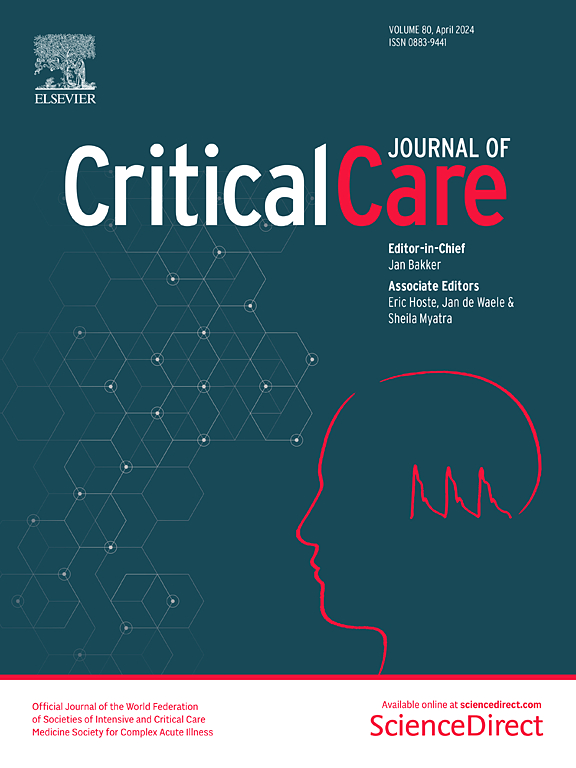Discarded intravenous medication in the ICU: the GAME-OVER multicenter prospective observational study
IF 8.8
1区 医学
Q1 CRITICAL CARE MEDICINE
引用次数: 0
Abstract
Medication waste is a contributor to the healthcare environmental footprint and impacts ecosystems. Data on medication waste in the intensive care unit (ICU) are scarce, and therefore are essential to develop new sustainable strategies. The GAME-OVER French multicenter prospective observational study was conducted from November 2022 to March 2023, over a 24-h period of choice, at the discretion of each participating center. Adult ICUs were enrolled in the study on a voluntary basis and hospitalized patients who did not express opposition were included in the analysis. The primary endpoint was the percentage of discarded intravenous (IV) medication in the ICU, defined as the ratio of the discarded volume to the total volume of IV medication prepared. Secondary endpoints included identifying risk factors and main reasons for medication waste and estimating its related healthcare cost. Among the 81 ICUs and the 1076 enrolled patients, 408.9 L of 130 IV medications were prepared. The discarded volume was 43.8 L, resulting in a 10.7% discarded IV medication (95% Confidence Interval (CI), 9.9–11.5). Number of daily admissions/discharges in the ICU, as admission for elective surgery, Sequential Organ Failure Assessment score ≥ 7, endotracheal intubation, renal replacement therapy and body mass index were independently associated with increased discarded IV medication. Ninety percent of pharmaceutical waste was attributed to 25 key drugs, with an estimated national annual cost of 2,737,163€. Discarded intravenous medication in the ICU is considerable and results in significant costs for the health care system, without obvious patient-centered value. Risk factors associated with medication waste were largely nonmodifiable, emphasizing the need for sustainable practices in patient care and resource management. ClinicalTrials.gov: NCT05553054 . September 23, 2022.求助全文
约1分钟内获得全文
求助全文
来源期刊

Critical Care
医学-危重病医学
CiteScore
20.60
自引率
3.30%
发文量
348
审稿时长
1.5 months
期刊介绍:
Critical Care is an esteemed international medical journal that undergoes a rigorous peer-review process to maintain its high quality standards. Its primary objective is to enhance the healthcare services offered to critically ill patients. To achieve this, the journal focuses on gathering, exchanging, disseminating, and endorsing evidence-based information that is highly relevant to intensivists. By doing so, Critical Care seeks to provide a thorough and inclusive examination of the intensive care field.
 求助内容:
求助内容: 应助结果提醒方式:
应助结果提醒方式:


